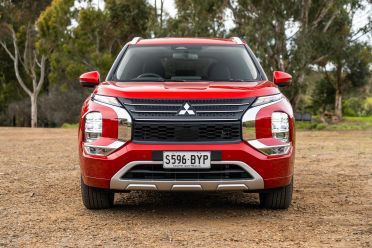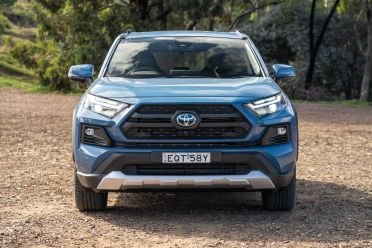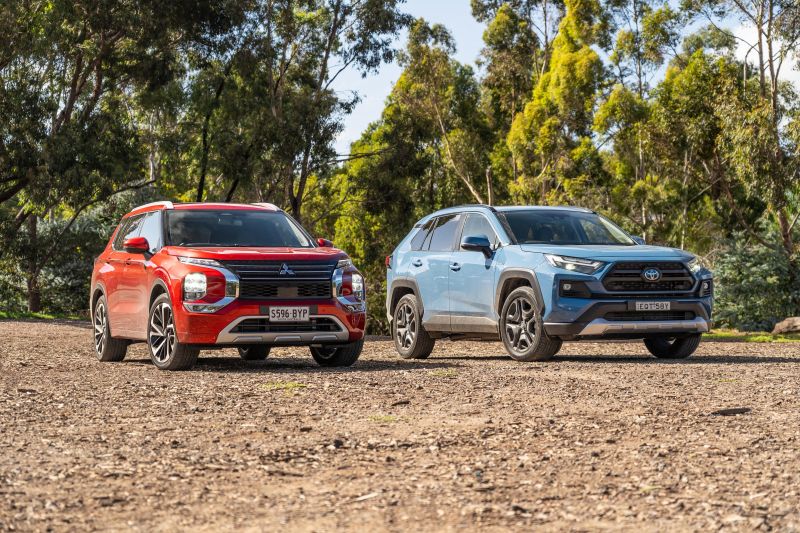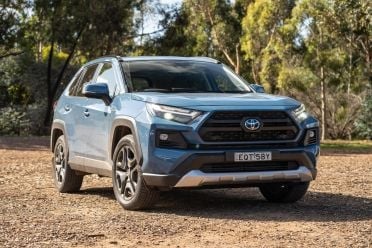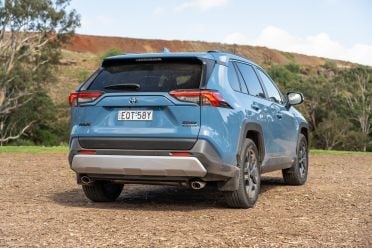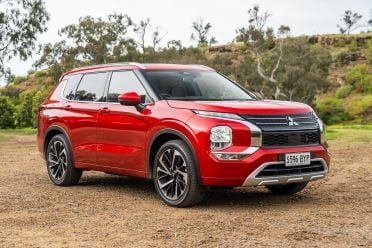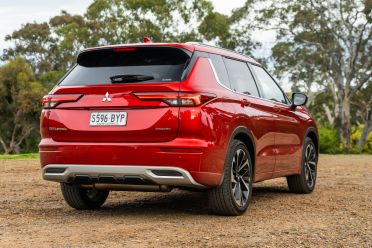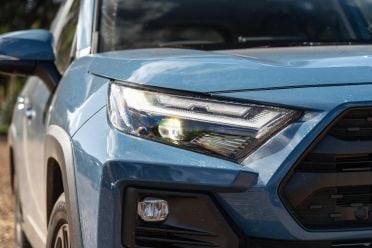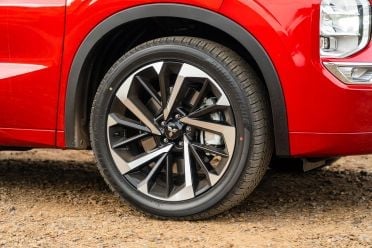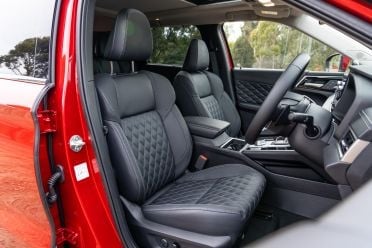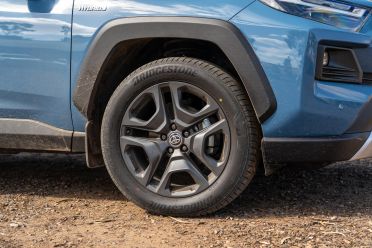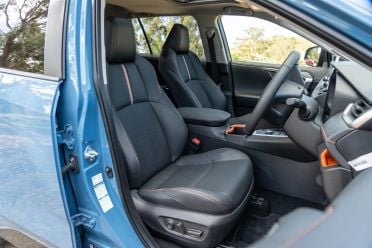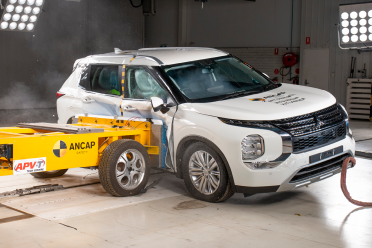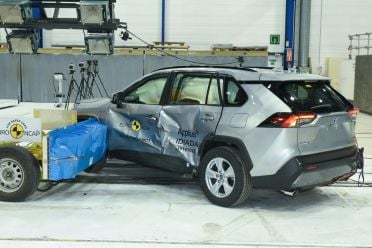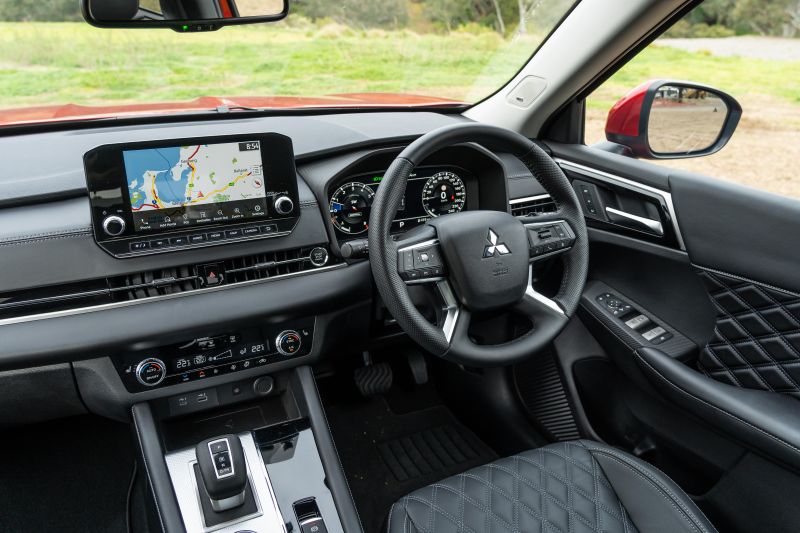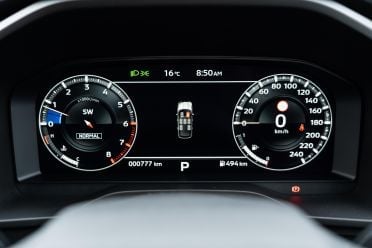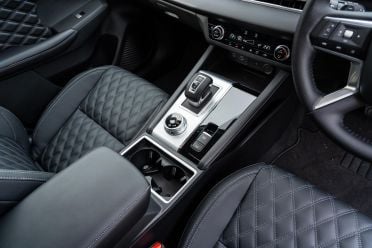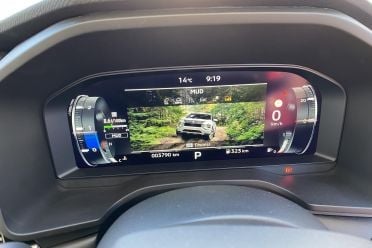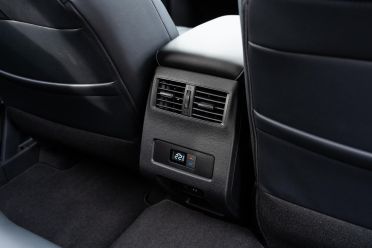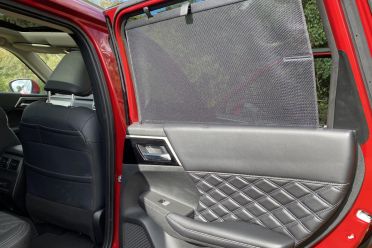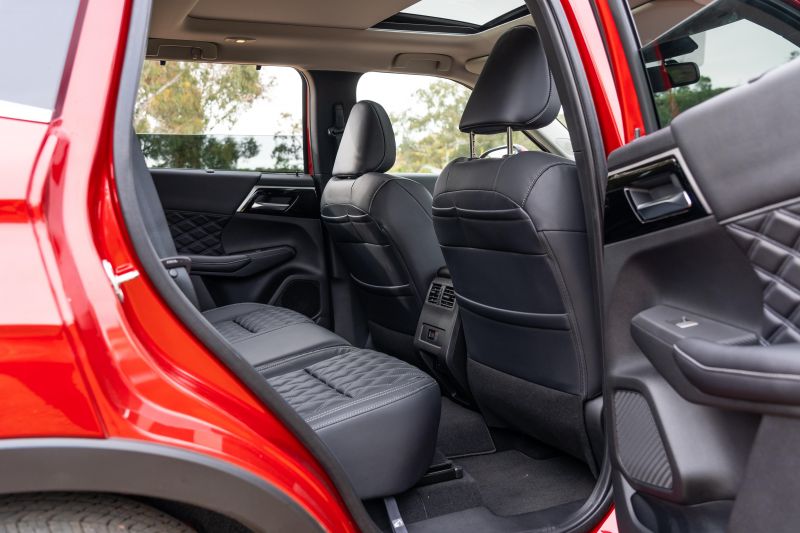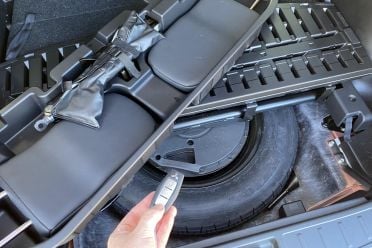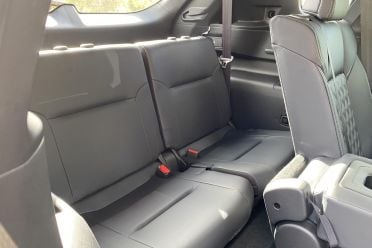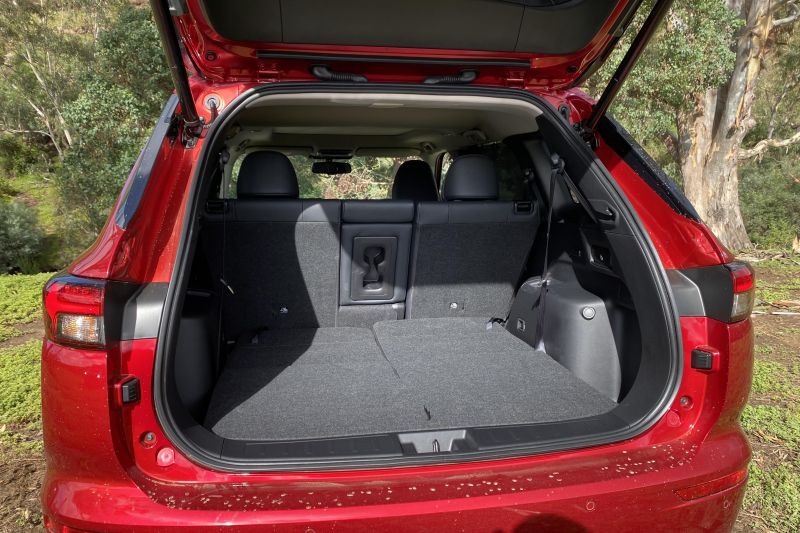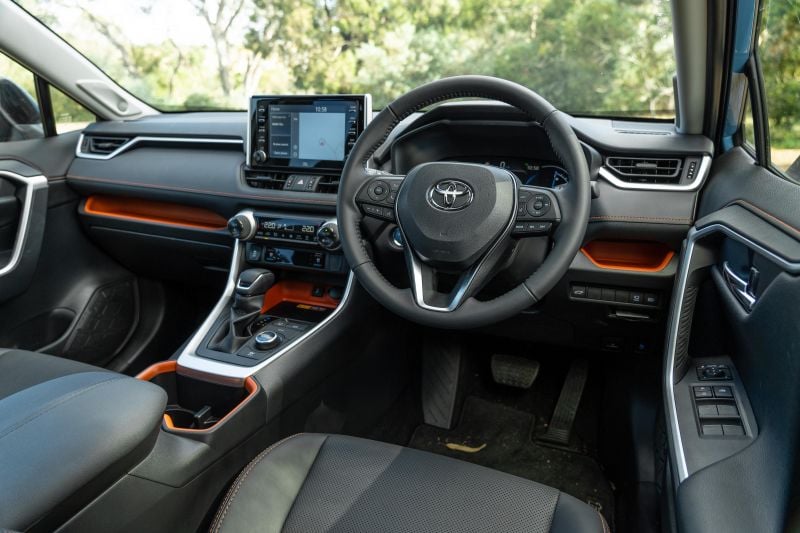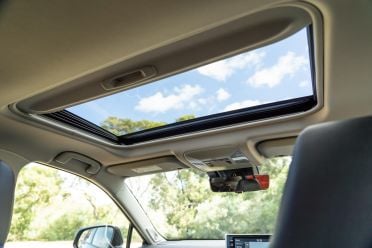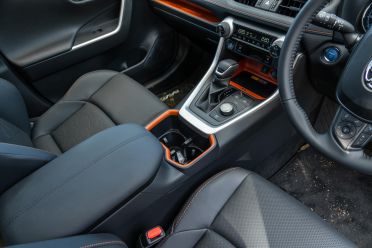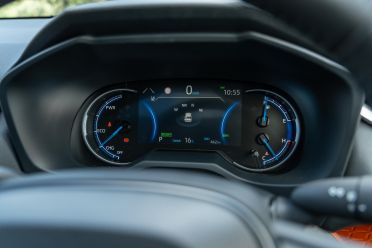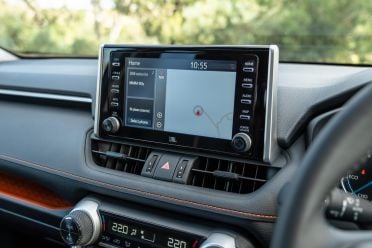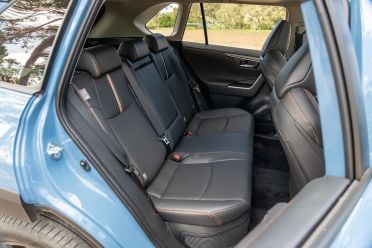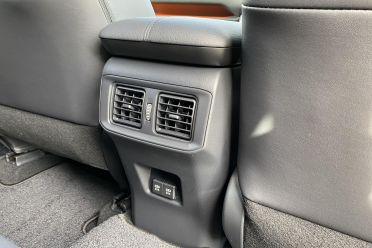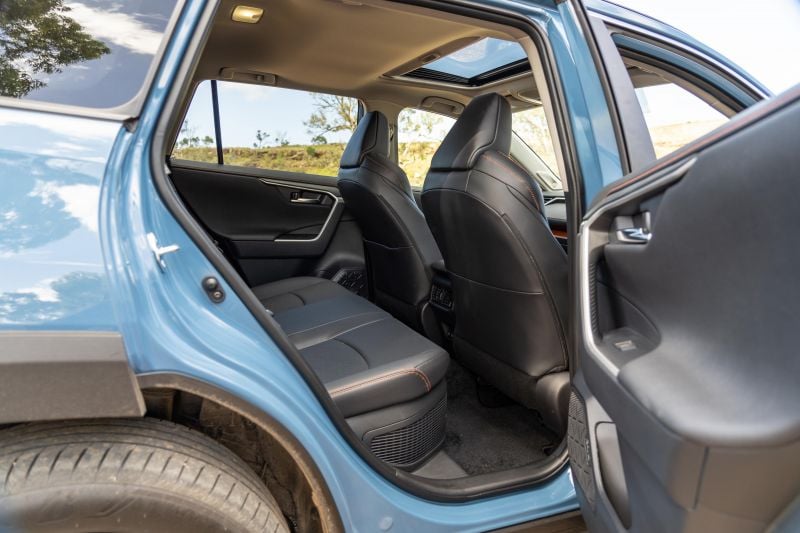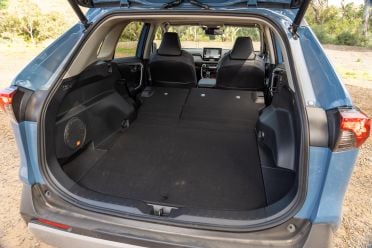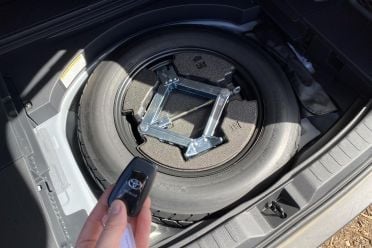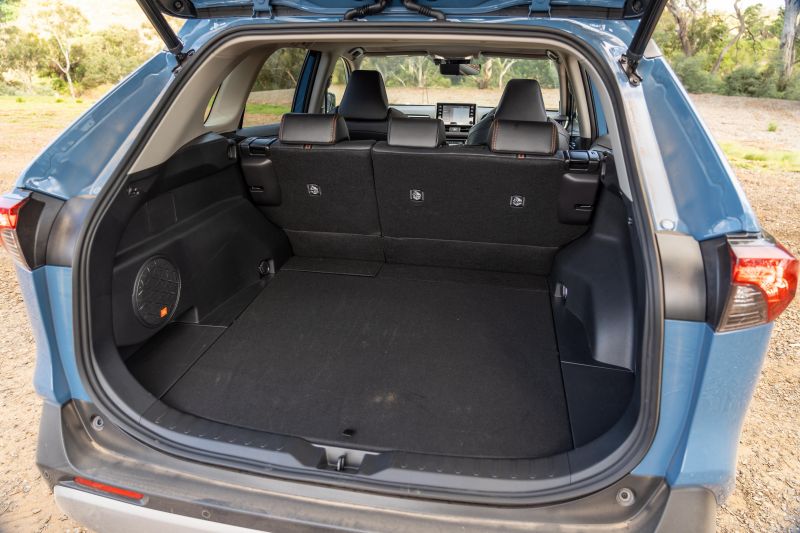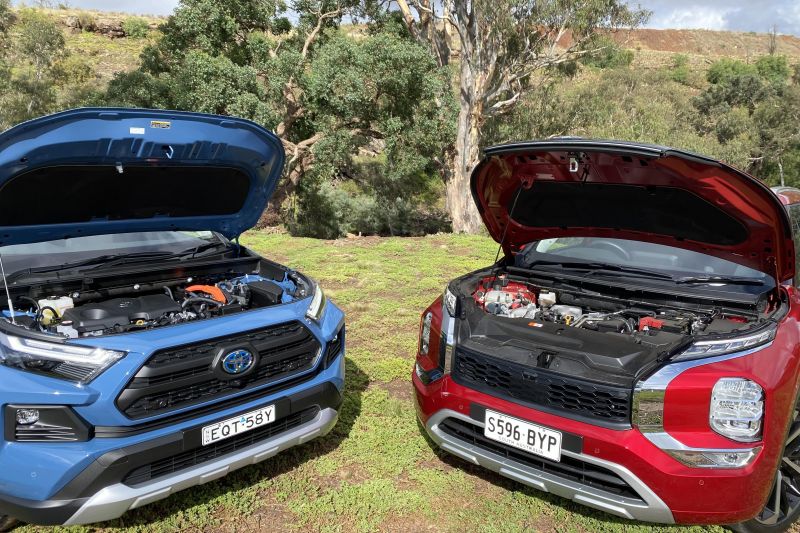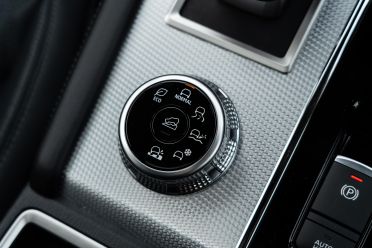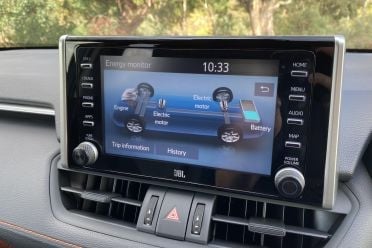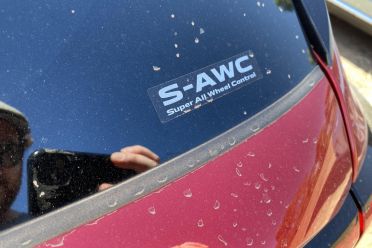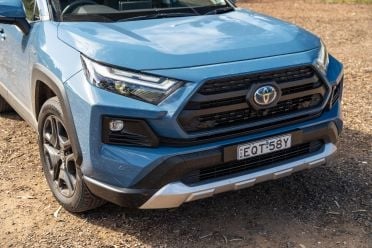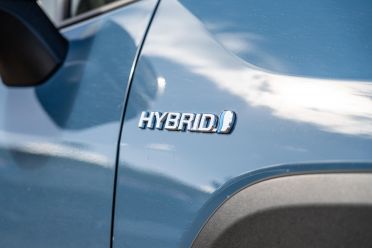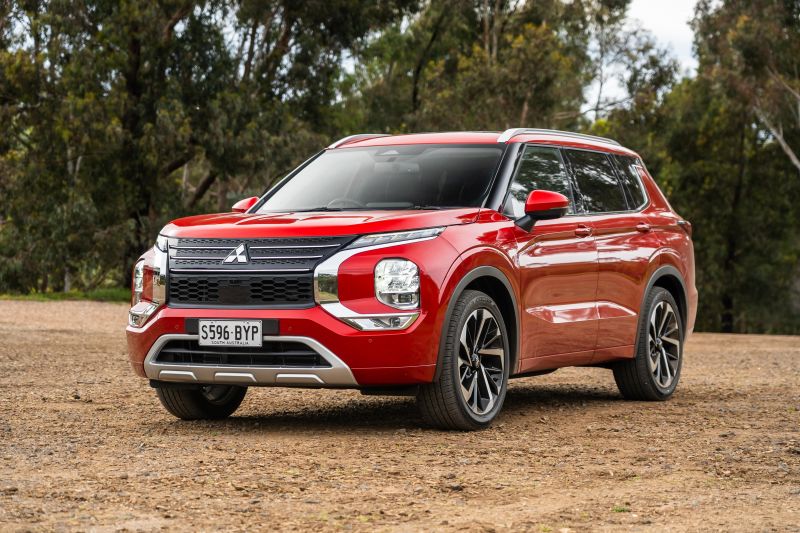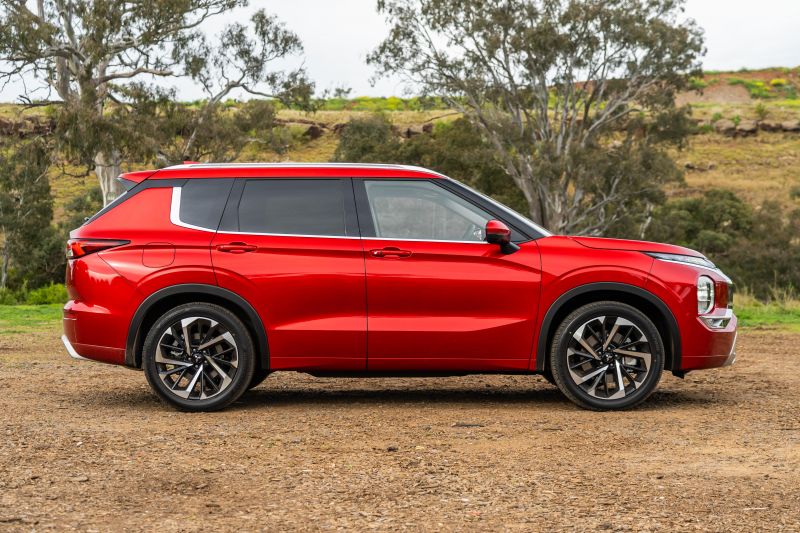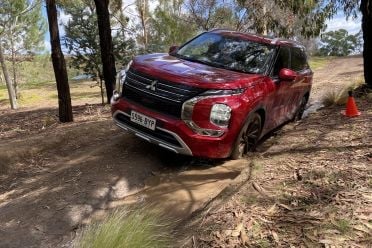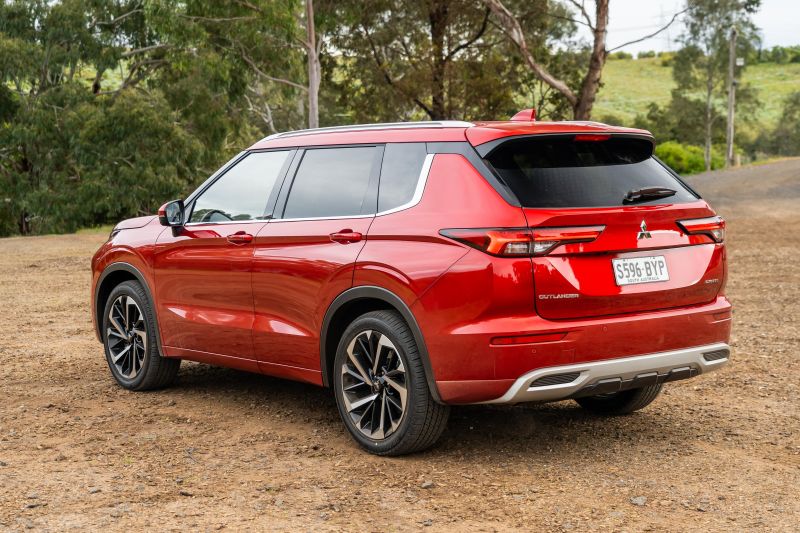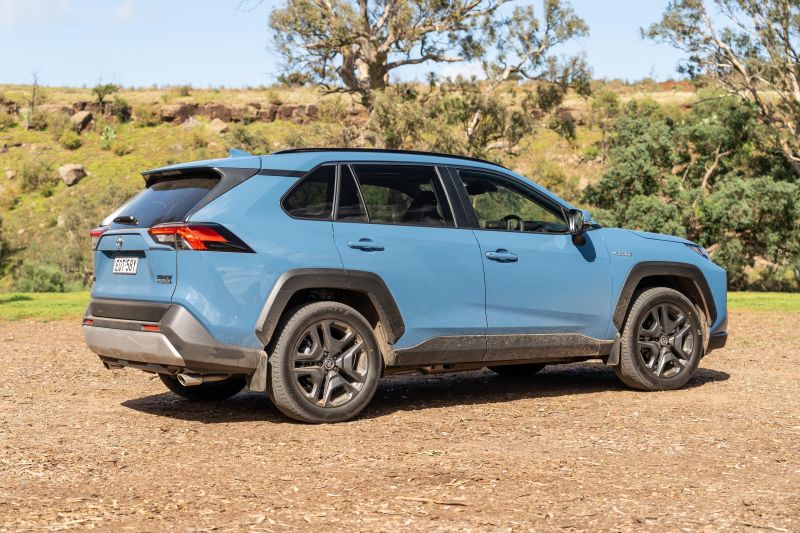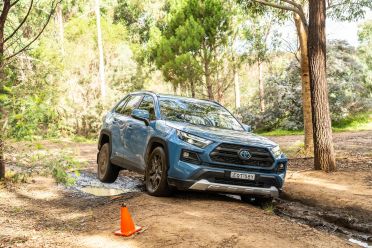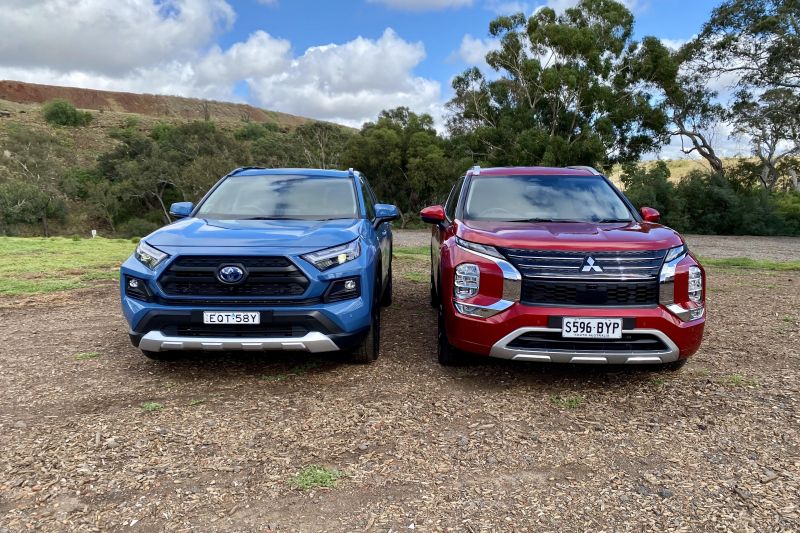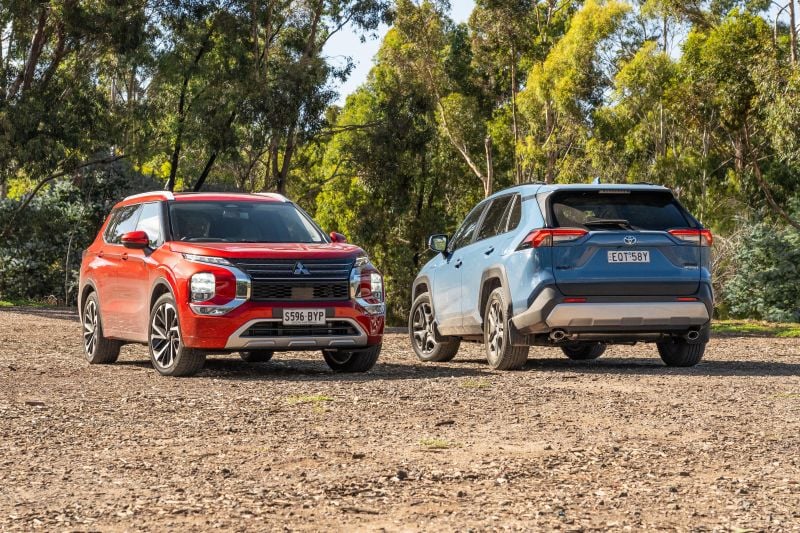The Toyota RAV4 has established itself as the dominant player in Australia’s sprawling medium SUV market.
And in an unwanted bit of news for rivals, Toyota has just launched a mild running update for 2022 to make it even more appealing.
One of the Big T’s strongest competitors on the charts is the Mitsubishi Outlander – which has entered a new generation that brings big enhancements over the old car, with brasher design.
So, a comparison test is called for. One of these might just be your next family car – available stock permitting!
How much?
These are two highly-specified grades: the Toyota RAV4 Edge and the Mitsubishi Outlander Exceed.
The RAV4 Edge costs $50,200 (petrol) or $52,700 (hybrid) before on-road costs, whereas the petrol-only Outlander weighs in at $48,490.
On a drive-away basis the RAV4 Edge costs around $55,200 to $57,700 (Victoria postcode used) whereas the Outlander Exceed carries a nationalised drive-away price of $51,990.
Pricing before on-road charges
- Toyota RAV4 Edge: $50,200 – $52,700 (latter tested)
- Mitsubishi Outlander Exceed: $48,490
Both models can be had for as little as $35,000 before on-road costs, if you’re willing to forgo some extra luxury features and settle for front-wheel drive.
MORE: 2022 Toyota RAV4 price and specs
MORE: 2022 Mitsubishi Outlander price and specs
What do you get?
Both come with:
- Space-saver spare wheels
- LED headlights
- Rain-sensing wipers
- Front and rear parking sensors
- Proximity key access
- Powered tailgates
- Power-folding side mirrors
- Driver-side powered memory seats
- Heated front seats
- Satellite-navigation
- 360-degree camera views
- Apple CarPlay and Android Auto
- Bluetooth
- Digital radio
- Wireless phone charger
- Front and back-seat USBs
Unique to the Mitsubishi:
- 20-inch wheels
- Bridgestone Ecopia tyres
- Panoramic sunroof
- Leather seat trim
- Fully digital instrument cluster
- 9.0-inch touchscreen
- Three-zone climate control
- 10-speaker Bose audio
- Head-up display
Unique to the Toyota:
- 19-inch wheels
- Bridgestone Alenza tyres
- Single-row sunroof
- Synthetic leather (Softex)
- Digital and analogue cluster
- 8.0-inch touchscreen
- Dual-zone climate control
- 9-speaker JBL audio
- Digital rear-view mirror
Are they safe?
Both of these vehicles scored five stars in their ANCAP crash tests: the Outlander with a cutting-edge 2022 date stamp and the RAV4 with a 2019 date stamp against earlier protocols.
| Mitsubishi Outlander | Toyota RAV4 | |
|---|---|---|
| Date stamp | 2022 | 2019 |
| Adult occupant | 83% | 93% |
| Child occupant | 92% | 89% |
| Pedestrian or cyclist impact | 81% | 85% |
| Driver assist functions | 83% | 83% |
Both come with:
- AEB car, pedestrian, cyclist
- Lane-departure warning
- Blind-spot monitoring
- Rear cross-traffic alert
- Automatic high beam
- Traffic sign recognition
- Active cruise control
- Front, front-side, curtain, driver’s knee airbags
- Rear ISOFIX and top tether points
The Outlander comes with a centre-front airbag and reverse AEB, while the Toyota has an active lane-keeping aid with steering inputs compared to a warning system in the Outlander.
What are they like inside?
Mitsubishi
The Mitsubishi makes an immediate impression on account of its diamond-pattern stitched door cars and seats, quality switchgear, perforated leather wheel, and silver tunnel inlay.
The 12.3-inch digital instrument cluster has numerous viewing modes – an AWD system diagram in real-time, navigation data, driver-assist system, and driving mode selection menus – all brought to life with brash resolution, and a nifty animated starting sequence.
A projecting head-up display on the windscreen and dummy-proof wheel buttons round off what is a solid driving position, nice and high with an expansive view of the proud bonnet.
Smaller touches like the AWD selector dial, gear shifter, and knurled temperature control dials likewise impart a premium feel. You can see where the costs have been saved, with the door trims and console able to flex with pushing or tugging, but it all looks a million bucks.
Storage is plentiful, comprising decent bottle holders in each door, a middling console and glovebox, sunglasses cubby in the roof, cupholders on the tunnel, and an open section below the ventilation controls replete with a wireless phone charging pad.
The touchscreen measures 9.0 inches and comes with satellite-navigation, phone mirroring (wireless Apple CarPlay, wired Android Auto), AM/FM/DAB+, USB-C and USB-A points, and a 10-speaker audio system by Bose. It’s framed by button shortcuts and volume/track dials.
The 360-degree camera resolution is sharper than the Toyota’s, and the system processing is superior in terms of menu loading, and pinching/zooming/swiping finger movements.
The second-row seat backs fold on a clever 40:20:40 basis with the centre section storing two cupholders, and the seats slide on rails and recline. Amenities include vents with temperature controls, USB-C and USB-A points, and pull-up sun blinds in the windows. Great feature.
The triple-decker pockets in the back of each front seat also add to the practicality factor.
Both knee- and foot-room proved fine for my 194cm, but headroom is impacted by the panoramic roof and presumably the fact the middle split bench sits higher on account of the third-row occasional use seats behind.
Said kerbside-accessible third-row seats are kid-sized, but since they stow away neatly into the floor (with headrests underneath) there’s no downside to having them. Most of the time they’ll be stowed away, but you never know when you’ll need to ferry seven people – intimately.
Boot capacity measures 478 litres with five seats in use and 163L with seven in use. In default five-seat form the boot measures 106cm at its narrowest point between the wheel arches and 137cm at its widest, 92cm from the seatback to the loading lip, and 79cm floor-to-roof.
The boot tailgate is powered, and there are levers in the boot to swiftly fold the middle seats down to put the Outlander into two-seater ‘van mode’. A space-saving temporary spare wheel lives under the loading floor.
Toyota
Next to the Outlander the RAV4 imparts a chunkier, bolder, and brighter look, but has less flashy cabin tech and trades the premium-looking materials for utilitarian stuff, exemplified by the synthetic leather seats with orange piping and plenty of bolstering.
Somehow the Toyota just feels a little more solid and hewn-from-granite to me, and I preferred its material mix.
Like the Outlander the driving position is good, with plenty of seat and wheel adjustments, although the single-row sunroof again ate into headroom and I found my hair grazing the roof even with the seats at their lowest point. It’s liveable, but you wouldn’t want to be 2m tall.
The bright orange theme continues throughout, incorporating the stitch-work, and various plastic inlays in and around storage areas. I like the chunky rubberised ventilation controls, knurled and illuminated drive mode selector, and utter lack of glossy black trim. Rare…
Behind the leather-wrapped wheel with its nicely damped buttons is a medley digital and analogue cluster with a few cool menus and animations, but nothing like the Outlander’s setup. Still, it has a digital speedo and trip computer, which is all I personally need.
Storage about matches the Outlander with the addition of a signature open section ahead of the front passenger, and a slightly more capacious centre console. It also has a bonus digital rear-view mirror which is handy if you have a full boot or three big-headed rear passengers.
The centre touchscreen lacks the Outlander’s whizz-bang, following on from its more basic instruments and lack of head-up display.
It has shortcut hard points, sat-nav, phone mirroring, a surround-view camera display, and a configurable home menu with three core tiles. But the camera resolution is a touch grainy and the processing speed and general layout of the menus feel and look dated.
The back seats offer vents (no third zone of temperature controls), USBs and cupholders, and the floor is mostly flat meaning better foot placement for rear-centre occupants. There are no sun blinds, and only seat-back pockets on the one side.
Legroom and foot-room is about similar to the Mitsubishi, but headroom is superior for taller occupants. There’s no third-row of seating like the Outlander, however.
Boot capacity measures 580L litres with five seats in use and the two-height floor at its lower setting. The boot measures 106cm at its narrowest point between the wheel arches and 135cm at its widest, 97cm from the seatback to the loading lip, and 80cm floor-to-roof.
The boot tailgate is powered, but there are no levers in the boot to swiftly fold the middle seats. A space-saving temporary spare wheel lives under the loading floor.
| Mitsubishi Outlander | Toyota RAV4 | |
|---|---|---|
| Length | 4710mm | 4615mm |
| Width | 1862mm | 1865mm |
| Height | 1745mm | 1690mm |
| Wheelbase | 2706mm | 2690mm |
| Boot space | 478L | 580L |
What’s under the bonnet?
The Mitsubishi Outlander exclusively uses a 2.5-litre naturally aspirated petrol four-cylinder engine with 135kW of power at 6000rpm and 245Nm at 3600rpm.
The engine is mated to a CVT automatic with eight set ‘speeds’, and paddle shifters. The Exceed comes with an on-demand all-wheel drive (AWD) system branded Super-All Wheel Control.
Claimed combined-cycle fuel economy is 8.1 litres per 100km, the tank is 55L, and it can be run on cheaper 91 RON petrol. Mitsubishi claims a braked towing capacity of 1600kg.
The Toyota RAV4 Edge now comes with two options: a 152kW (at 6600rpm) and 243Nm (at 4000rpm) naturally aspirated 2.5-litre petrol four-cylinder, or a 163kW petrol-electric hybrid.
The latter pairs a 131kW and 221Nm 2.5-litre petrol with electric motors at each – 88kW front and 40kW rear – each powered by a small battery fed by brake-energy recuperation and petrol power generation. The transmission is an e-CVT, and the AWD system electric.
Toyota claims remarkable fuel economy of 4.8L/100km, against 6.7L/100km for the purely petrol model, using 91 RON, which with a 55L tank gives a range north of 1000km. Towing capacity is 1500kg.
The RAV4 we borrowed from Toyota was the hybrid – clearly the superior option of the two choices.
Now, you might still wonder why we tested the RAV4 Hybrid against a non-hybrid Outlander. Simply put, the mild hybrid accounts for the overwhelming majority of RAV4 sales, so it’s more relevant to far more people.
Yes, an even more advanced and potentially fuel-saving Outlander plug-in hybrid (PHEV) is coming soon, but that car is not on sale yet. Plus, when it does arrive, will be a significantly more expensive proposition – in Exceed PHEV guise, almost certainly north of $60,000.
| Mitsubishi Outlander | Toyota RAV4 | |
|---|---|---|
| Engine | 2.5-litre petrol | 2.5-litre petrol, two e-motors |
| Power | 135kW | 163kW |
| Torque | 245Nm | No system output available |
| Fuel economy claim | 8.1L/100km | 4.8L/100km |
| Our fuel economy | 9.3L/100km | 5.8L/100km |
| Our 0-100km/h time | 9.5 seconds | 8.5 seconds |
| Transmission | CVT | e-CVT |
| Configuration | All-wheel drive | All-wheel drive |
| Towing capacity | 1600kg | 1500kg |
How do they drive?
Mitsubishi
The Outlander’s engine is well suited to inner city commuting, with good refinement and immediate responses to throttle inputs in stop-start traffic.
It loses a bit of refinement when overtaking or during more dynamic driving, only offering acceptable levels of acceleration without blowing you away.
We averaged 9.3 litres per 100km fuel consumption and averaged 9.5 seconds from 0-100km/h, neither of which put the Mitsubishi at the pointy end of the class.
Mitsubishi’s S-AWC all-wheel drive system is clever, offering six terrain or driving-style modes controlled by that chunky dial on the transmission tunnel.
It couples the rear quickly and is able to modulate both accelerator input and braking force at each corner of the vehicle – either maximising the so-called ‘sportiness’, or pre-loading for snow, gravel or muddy surfaces.
It’s not going to take you as far off the beaten trail as a Pajero Sport or Triton, but it’ll handle lumpy tracks and low-friction surfaces without too much huff. As evidenced in the pics below.
It feels quite softly sprung, meaning it’s designed to soak up bumps, as evidenced by its body control and behaviour over undulations and through corners.
That’s absolutely fine, except the springs/dampers don’t seem to smooth out the ride quality over expansion joints, sharp speed bumps and stuff like that.
Much of this is also down to the low-profile tyres with limited cushioning sidewall, but the end result is a less-comfortable and cosseting ride over bad roads than we’d prefer.
The electric-assisted steering is typically very light and non-resistant, although a little more resistance from centre would be advisable, I think. I found myself making small adjustments from time to time when I probably didn’t need to.
The active cruise control worked well and was simple to operate. Moreover I have no really issue with the lane-keeping alert that vibrates the wheel – though the Toyota by contrast has steering override that keeps the car nearly centred.
Ultimately, the Outlander’s standout areas are its design, flexibility and interior tech, more than its driving characteristics. Serviceable yes, inspiring no.
Toyota
The hybrid engine is a no-brainer if you can brave the waiting list, with the $2500 premium over the normal petrol option well worth paying. Especially with current pump prices.
It relies on the silent e-motors on startup and when reversing, and more importantly rolls off the mark without using petrol too. When the petrol engine does fire up, it does so with commendably little noise or vibrations.
I could devote 10 paragraphs to it, but suffice to say the RAV4 is faster and quieter than the Outlander, and is 60 per cent more fuel efficient to boot.
The praise isn’t universal though. This model uses a rear axle e-motor to run the AWD system instead of the petrol’s purely mechanical system, which in theory sounds great.
An integrated management system controls engine, transmission, steering, torque distribution and brakes, and in Edge form the usual Sport/Eco/EV modes are joined by a Trail mode that applies braking force to a slipping or freely rotating wheel, when cocked.
It didn’t seem to work all that effectively in our testing however, taking a few seconds to re-distribute drive torque over offset moguls, and battling when restarting halfway up a logged surface.
It has better road manners than the Mitsubishi, though, particularly when it comes to smoothing out big impacts (like settling after speed bumps) and when negating pocked, pothole-laden tarmac – all too common.
The RAV4 also felt a little more tied-down and agile through corners, with a more consistently-weighted electric steering setup to boot.
That Toyota has made its humble medium SUV a dynamic leader in its class is surprising, and commendable.
While it’s unlikely to be a deal-breaker, the RAV4 trails the Outlander when it comes to ground clearance and payload – the latter calculated as GVM minus kerb weight – as shown in the table.
| Mitsubishi Outlander | Toyota RAV4 | |
|---|---|---|
| Kerb weight | 1760kg | 1760kg |
| Ground clearance | 210mm | 190mm |
| Front suspension | MacPherson strut | MacPherson strut |
| Rear suspension | Multi-link | Trailing wishbone |
| Turning circle | 10.6m | 11m |
| GVM | 2355kg | 2230kg |
Cost of ownership
Both Toyota and Mitsubishi offer five years of warranty, the former with no distance cap and the latter 100,000km.
But so long as you service your Outlander at a registered Mitsubishi dealer, the company will extend this cover to 10 years or 200,000km.
This pair are both very affordable to maintain through dealer servicing, if that’s your preference.
The Mitsubishi Outlander has 12 month or 15,000km servicing intervals, each of the first five capped at $199 a pop.
The Toyota RAV4’s service intervals are also 12 months and 15,000km, with each of the first five capped at $230 a pop.
CarExpert’s Pick
The new Outlander turns more heads, has a handy third seating row, is better for mild soft-roading, offers a few more features for a bit less money, superior interior tech, and has a top-shelf warranty (with strings attached).
That said, the RAV4 offers more back-seat headroom, a more comfortable ride, and a punchier drivetrain with better refinement and fuel efficiency. To me it feels like a more cohesive and rounded medium SUV in reality, if not entirely on paper.
This all being said, in the current supply-constricted landscape, if your quoted Toyota wait time is many months longer, then the Mitsubishi is close enough to be worth a serious look.
The Edge would also retain its edge in petrol-only form, too, by the way, although I’d be going for the hybrid – unless regular light off-roading is a serious goal.
Click the images for the full gallery
MORE: Everything Mitsubishi Outlander
MORE: Everything Toyota RAV4





